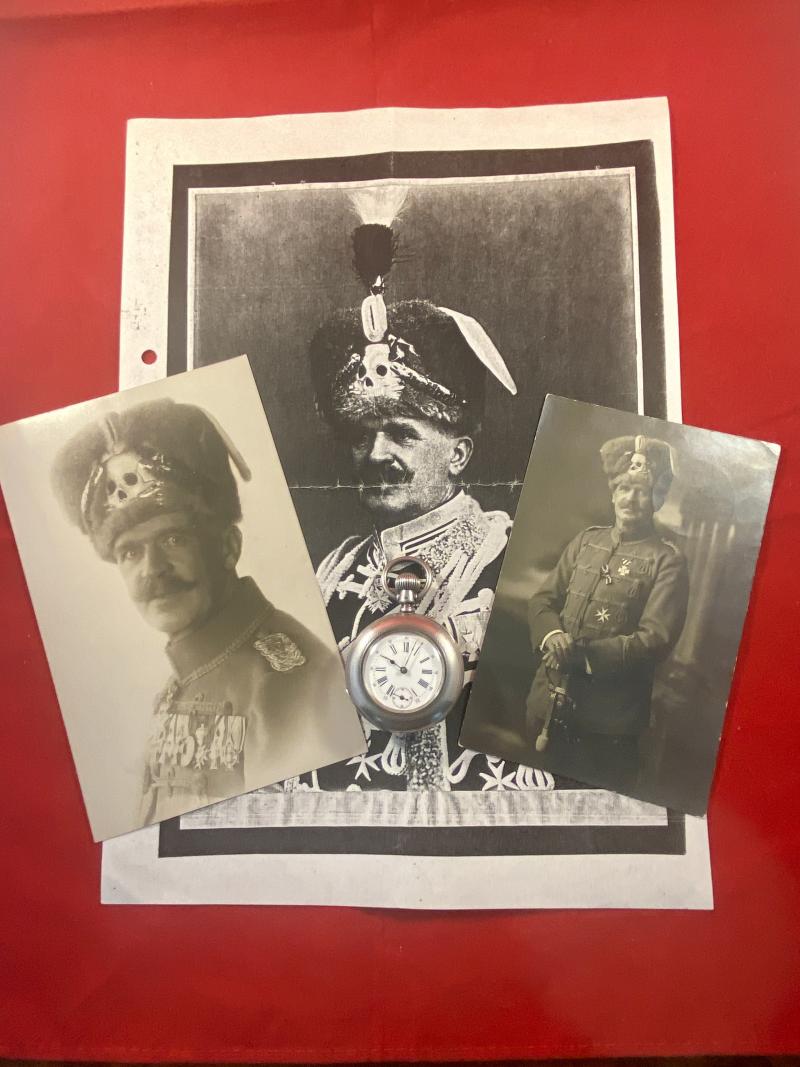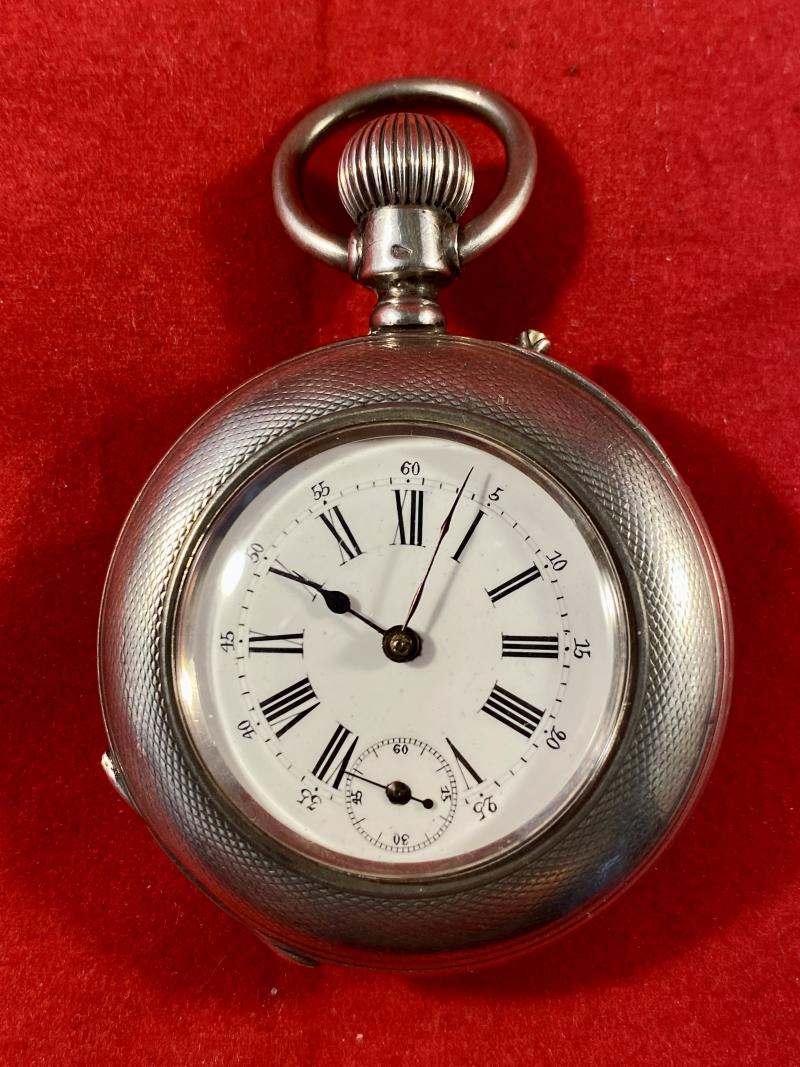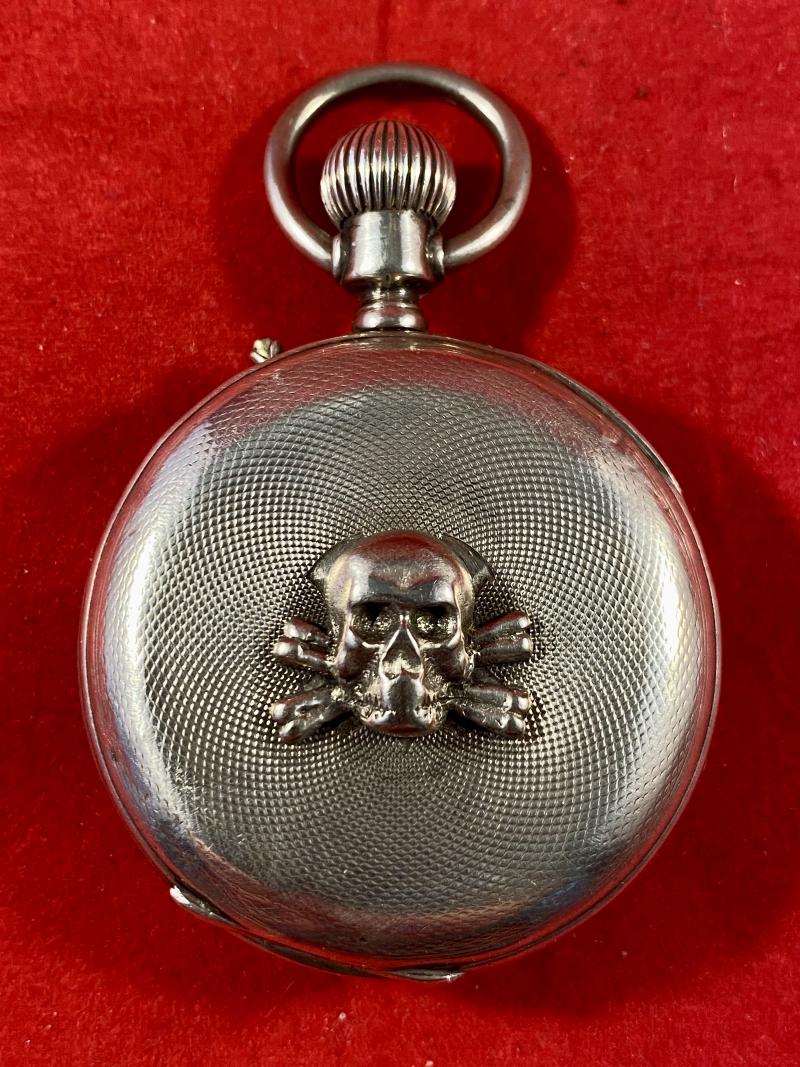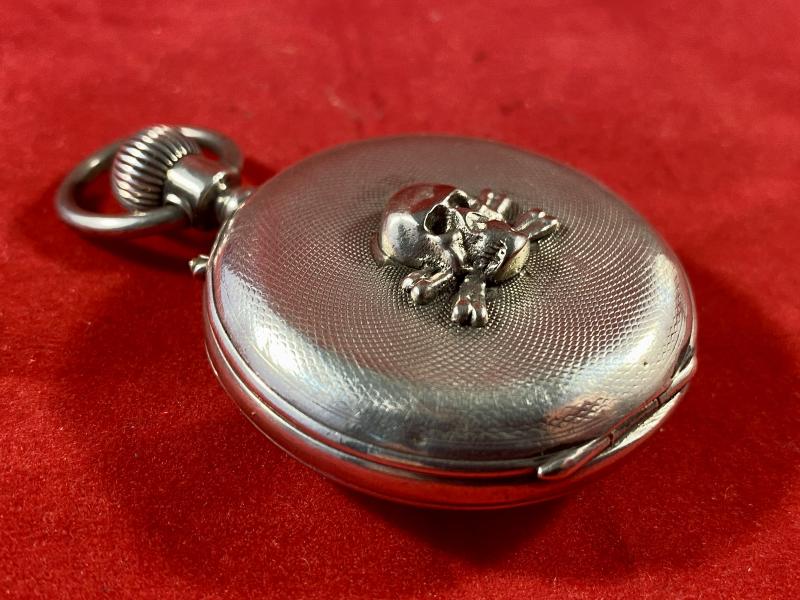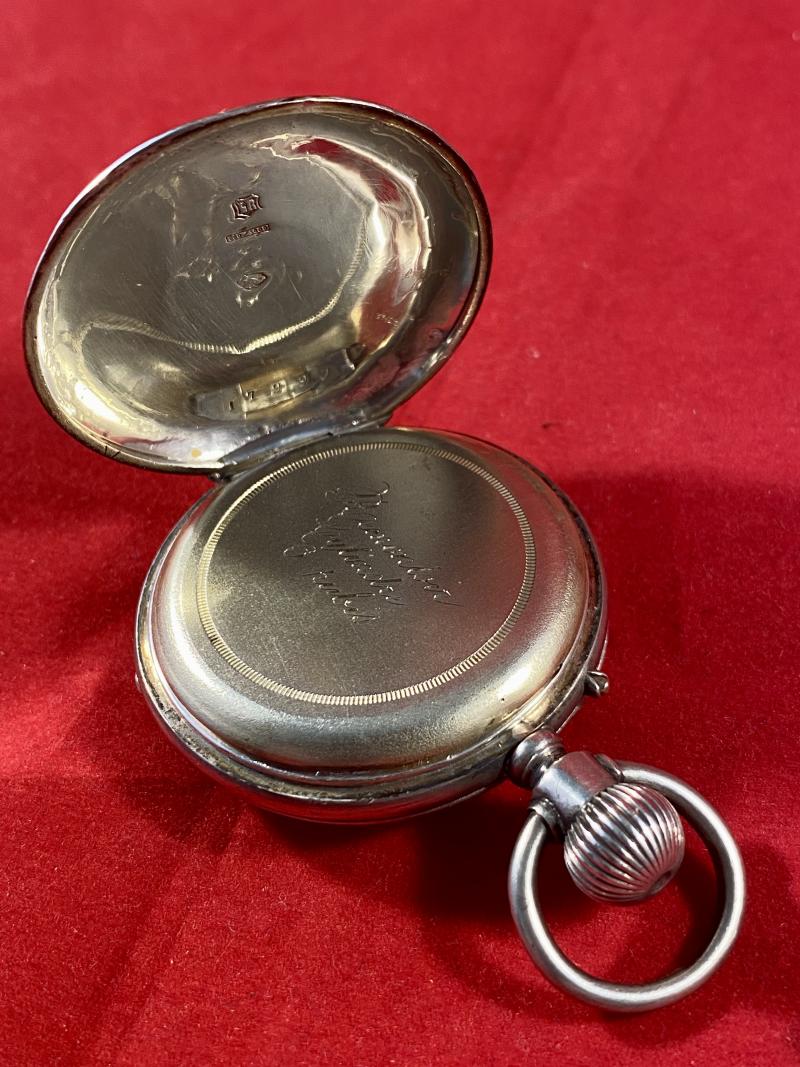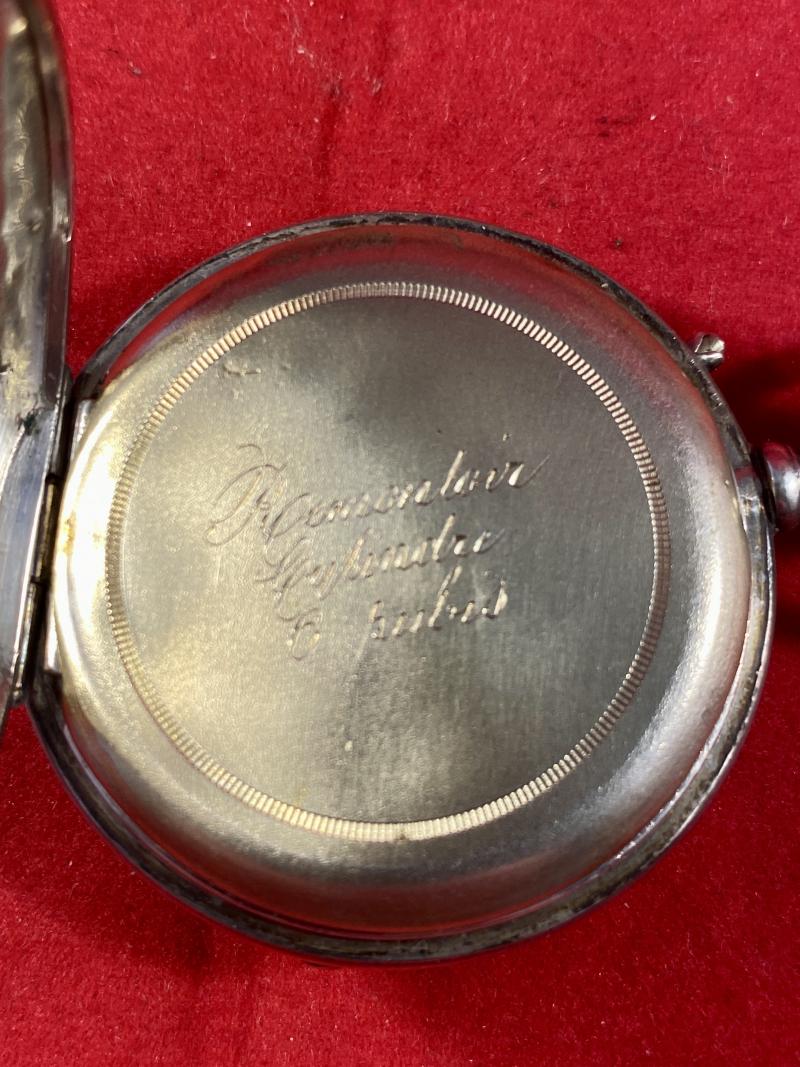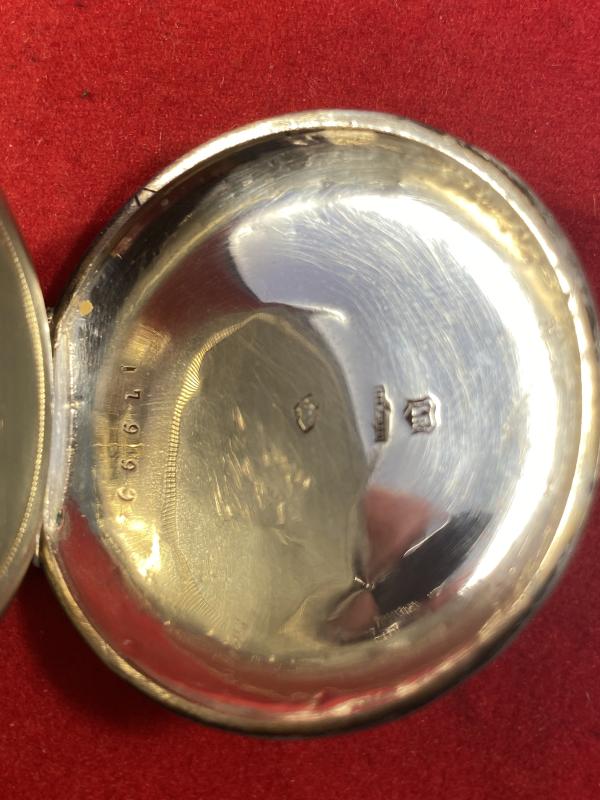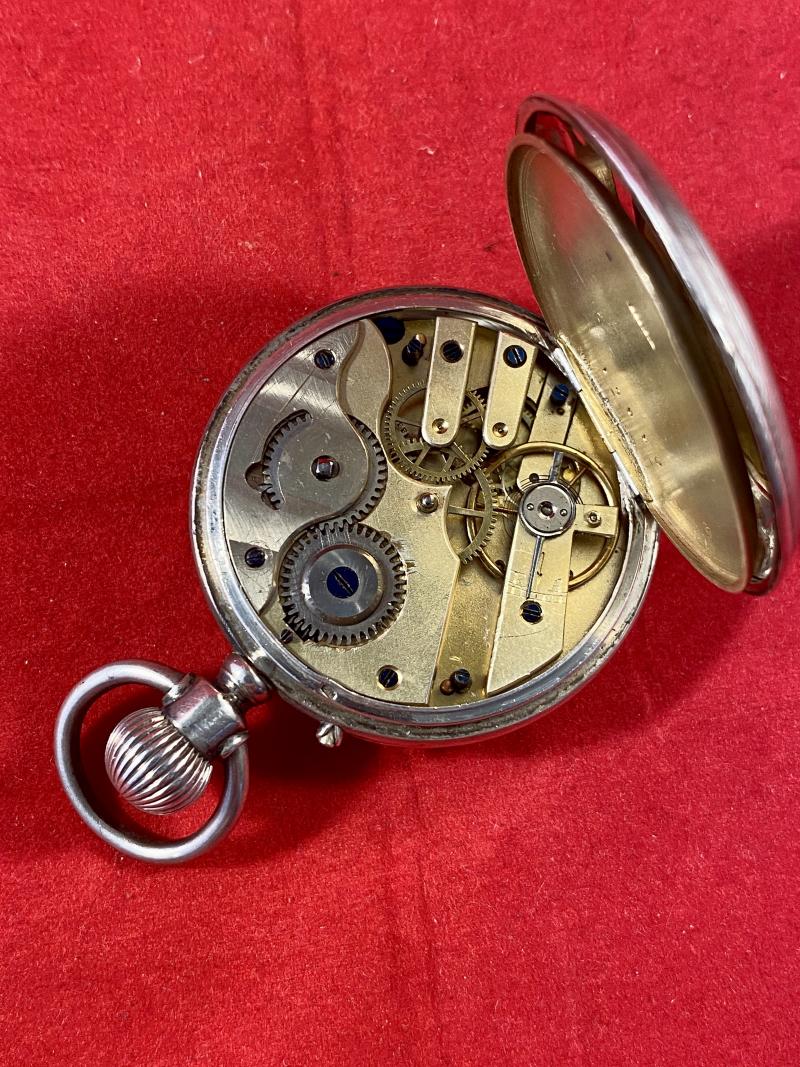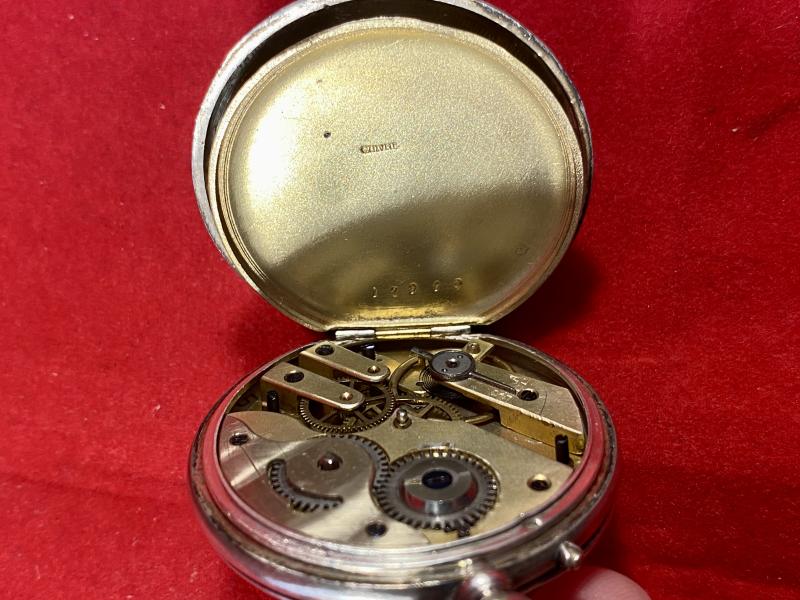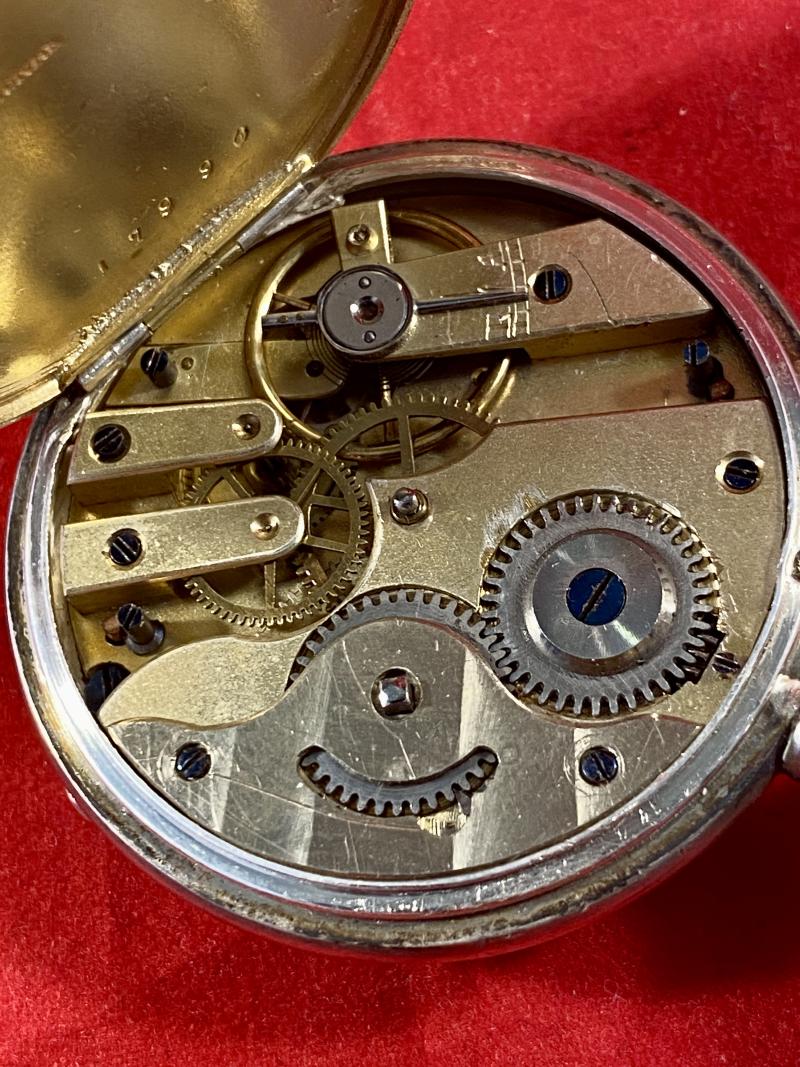Rare Imperial German “Hussar” Swiss Silver Pocket Watch with Photos and Documents Relating to Kurt von Teichmann
Here on offer is the personal silver pocket watch that belonged to Kurt Sylvius Ferdinand Moritz von Teichmann of the 2nd Lieb-Hussar Regiment.
Research shows that the Leib-Hussar Regiment "Konigin Viktoria von Preussen" Nr. 2, part of the XVII Army Corps, was garrisoned in Danzig-Langfuhr in what was then West Prussia, now Poland.
Princess Viktoria Luise, of Prussia, only daughter and the last child of Wilhelm II,and a great-granddaughter of Queen Victoria, as noted from the unit’s title was the honorary colonel of the regiment and regularly inspected the hussars, complete in her uniform.
Under General August von Mackensen in August 1914, they were rushed to the Western Front in the opening stages of the Great War to fight at the Battle of the Marne.
Transferred to the Eastern Front in autumn 1914, the Hussar brigade (made up of the 1st and 2nd regiments) fought first in Galicia and in the Battle of Riga and were involved in the occupation of the islands Oesel and Dago.
After the Treaty of Brest-Litovsk with Russia on 3 March 1918, the units remained as occupation forces in Russia.
Returning in January 1919 to Danzig, they were disbanded after 178 years of service – though their lineage, flags, and trophies were retained in the 2nd Squadron of the 5th (Prussian) Reiter (Mounted) Regiment in the Reichswehr stationed at Stolpe throughout the 1920s and early 30s.
The Wehrmacht distanced themselves from much of the old Imperial trappings and the hussars were not reconstituted after 1935– though of course the Totenkopfhusaren skull went on to greater infamy in the Nazi regime.
The watch was initially purchased from the family of Kurt von Teichmann in 1992.
The watch is 1.6” (4.25)cm diameter and is working and keeping good time, but would benefit from a professional service and clean to keep it that way.
On the front, the open face dial with a second’s hand, has no cracks that I can see and a clear crystal glass.
On the reverse is an impressive solid silver raised Lieb-Hussar Totenkopf, skull and cross bones.
It has a 800 grade silver outer case with Swiss silver markings, that is in excellent condition with just some wear and tiny indentations on the back.
The silver markings can be found inside the back cover and are the “wood grouse” mark (post 1880) for Swiss silver and 800 – 1000 for 800 grade standard continental silver. There is also a maker’s mark of “LR” inside shield that I can’t trace.
There is also a serial number that I believe relates to the watch, being 17990.
I believe the watch dates from the early 1900’s, but it can’t be dated accurately as the Swiss didn’t use date letters on their silver during this period.
Then on the top of the inner cover are engraved the words:
Remontoir
Cylindre
6 Rubis
This denotes it has a 6 ruby jewelled Swiss cylinder escapement/movement.
Then on the inside of that cover is the word:
CUIVRE
Which means copper in English, confirming that the inner cover is actually made from copper that has been plated and is stamped with the same serial no. 17990.
The cylinder movement is in excellent condition but I can’t see a serial number actually stamped on the movement, just on the case.
Along with this fine and rare silver pocket watch, are photos and documents relating to Kurt von Teichmann.
These included the following:
1) A handwritten and signed letter from the grand-daughter of von Teichmann (dated 1992) identifying her grandfather as the owner of the watch and originator of the remaining artefacts in this grouping.
2) A field post-marked WW1 postcard from von Teichmann to his family in his own hand writing dated 5th October 1915.
The obverse of the card shows von Teichmann highly decorated and a bearer of the Order of the cross of St. John.
3) A photo is a reproduction of a photo (4” x 6”) of von Teichmann in his younger years, again highly decorated.
4) A low quality 11 x 8.5” copy of a photo of a large oil portrait of von Teichmann very late in life well after the end of WW1.
5) The original receipt from Masons Auctions for the purchase of the grouping in 1997, along with a copy of their catalogue listing.
6) The original typed receipt from 1992, to the family for 1000 DM.
Please see my pictures for the details of the condition, which complement this description.
Please see my TERMS OF BUSINESS regarding Deliver Charges and Insurance regarding additional insurance cover, should you require it, BEFORE the item is dispatched.
The responsibility lies with the customer to check with your Customs restrictions that this item can be imported into your country.
Code: 50990
525.00 GBP

